7 Most Energy-Efficient Ways to Heat a Home (With Pictures)
-
Greg Iacono
- Last updated:
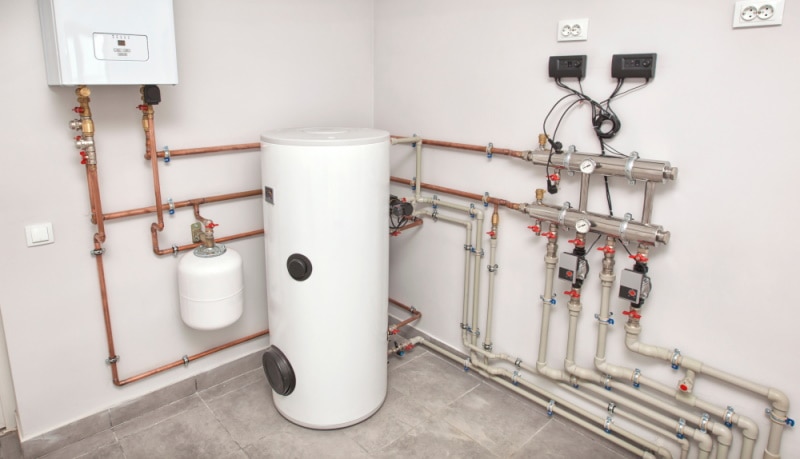
Having a warm, cozy home to live in is essential in winter, even if you live where the temperatures don’t usually drop too low. The challenge, however, is to heat your home without raising your energy bill so high that it bankrupts your budget. That makes choosing and using an energy-efficient heating system critically important, as well as using that system correctly.
There are several ways to heat a home, but the question is which is the best choice? To help you figure that out, below are the seven most energy-efficient ways to heat a home! Read on to discover tips, tricks, and real-world advice to stay warm this winter without busting your energy budget.
The 7 Energy-Efficient Ways to Heat a Home
1. Geothermal Heat Pump
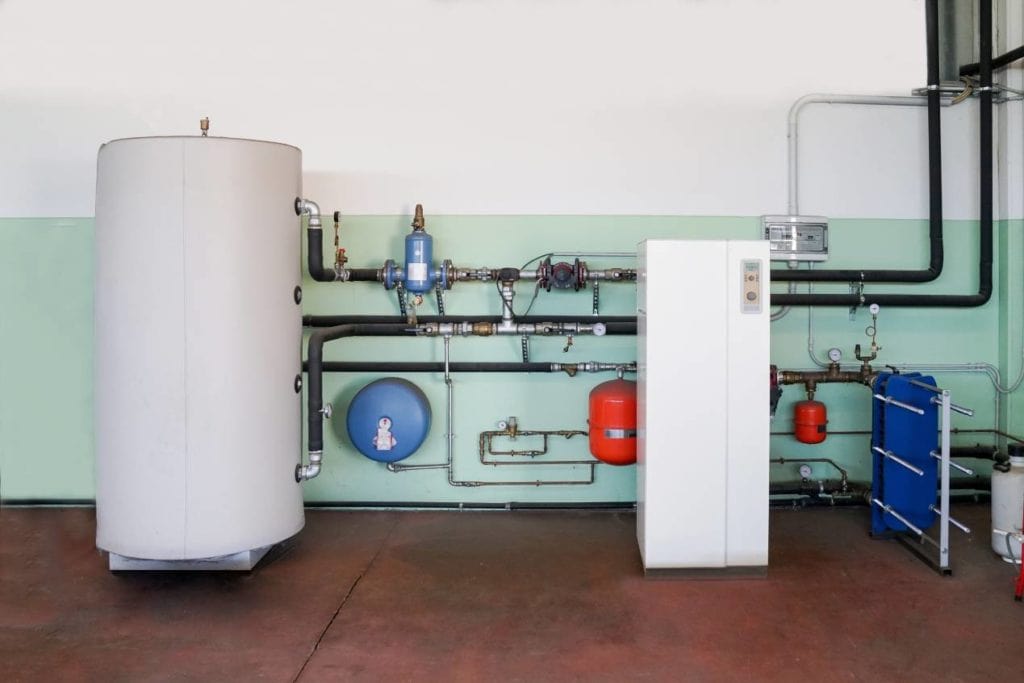
| Initial Expense | High |
| Monthly Expense | Lowest |
| Maintenance Level | Low |
| Carbon Footprint | Low |
Geothermal heat pumps are the definite winner when it comes to heating a home efficiently. Geothermal heat pumps move heat from the soil or water and transfer it into your home. For example, in winter, geothermal heat pumps capture heat in the ground or a small body of water and bring that heat into your home. In summer, they work in reverse, capturing heat inside your home and pumping it outside.
Amazingly, the best geothermal heat pumps can produce upwards of four times the heating energy as the electric energy that’s needed to make them work. That makes them more than 100% efficient! One of the best reasons to use a geothermal heat pump besides energy efficiency is that heat pumps are very gentle on the environment since they don’t burn fossil fuels.
Geothermal heat pumps are also one of the safest home heating systems because they don’t produce the deadly carbon monoxide that gas and oil heating systems do.
- Incredibly energy efficient
- Very safe as they don’t produce carbon monoxide
- Gentle on the environment
- Produce more energy than they use (100%+!)
- Low maintenance
- Tax credits may be available
- Initial installation is expensive
2. Air-Source Heat Pump
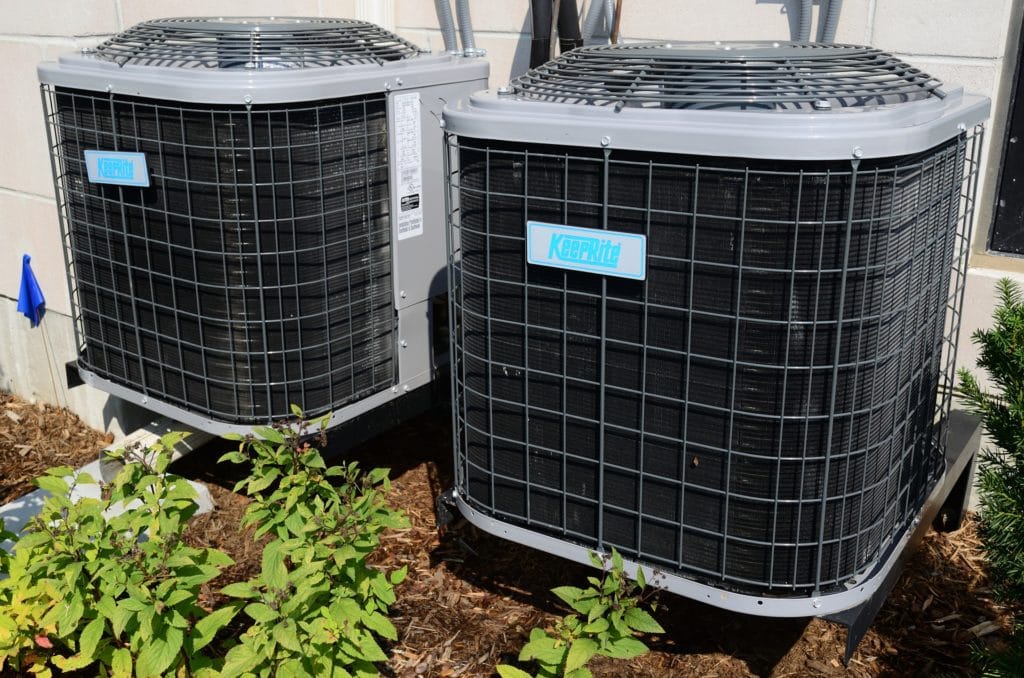
| Initial Expense | Moderate to High |
| Monthly Expense | Lowest |
| Maintenance Level | Moderate |
| Carbon Footprint | Low to moderate |
Air-source heat pumps work like geothermal heat pumps, but instead of capturing heat in the ground or a water source, they take it out of the air surrounding the heating system. One significant difference, however, is that an air-source heat pump needs a refrigerant to accomplish its work.
That means you’ll need to occasionally check the system to ensure the refrigerant levels are adequate. An air-source heat pump is almost as efficient as a geothermal, but not quite. Plus, even though they can extract heat from relatively cold air, their energy efficiency starts to decrease once the temperature falls below 32℉.
Therefore, air-source heat pumps aren’t recommended where winters are extreme. Still, their high-efficiency level makes an air-source heat pump an excellent money-saving choice to heat your home.
- Highly efficient heat source
- Less expensive than a geothermal heat pump to install
- Gentle on the environment
- Tax credits may be available
- Efficiency is reduced when temps fall below 32℉
- Maintenance levels are higher
- Not a good choice in areas where winters are extreme
3. Gas Furnace

| Initial Expense | Moderate |
| Monthly Expense | Moderate |
| Maintenance Level | Low |
| Carbon Footprint | Moderate |
Although older furnaces aren’t nearly as energy efficient, today’s newer furnaces are manufactured with modern tech, increasing their efficiency significantly. That’s good news since over 60% of the homes in the United States use a furnace for heating in winter.
Of course, you’ll need a new furnace for the most efficiency. If you’re in the market for one, you should know that there are three types: gas, oil, and electricity. Gas furnaces are more efficient than oil furnaces and far more efficient than electric furnaces. In fact, a natural gas furnace might cost you less to run in winter than an air-source heat pump.
The reason is that natural gas prices continue to drop (depending on where you live). However, you should note that the overall energy efficiency of a natural gas furnace is lower. Also, the safety hazard of running a gas furnace is much higher than a heat pump because of the need to burn gas and the carbon monoxide it creates.
- Cheaper to install than a heat pump
- Practically maintenance free
- Natural gas prices keep dropping
- May be less costly than an air-source heat pump
- Less overall efficiency than heat pumps
- Gas presents a small risk of fire or explosion
- Natural gas lines might be unavailable in remote rural areas.
4. Electric Furnace
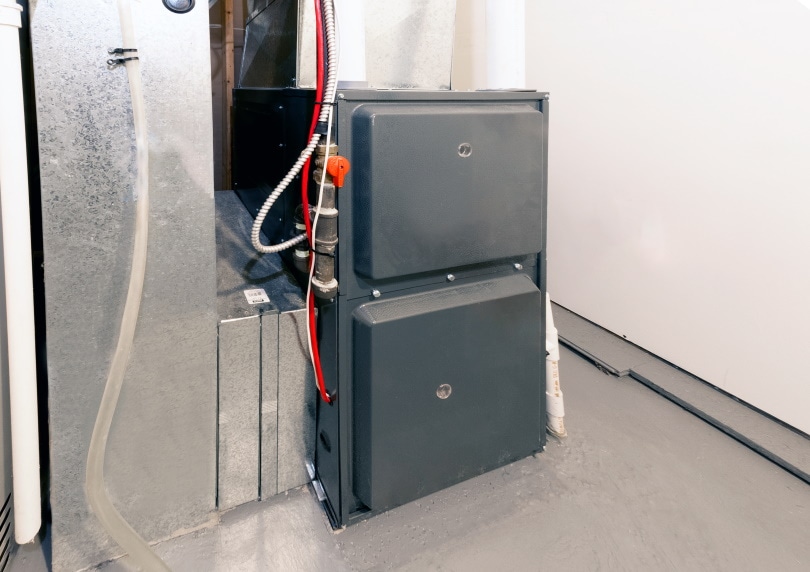
| Initial Expense | Moderate |
| Monthly Expense | Moderate |
| Maintenance Level | Low |
| Carbon Footprint | Moderate |
Electric furnaces work exactly like gas furnaces except that there’s no need for gas lines. That can be a blessing if you’re in a remote rural area where gas lines are unavailable. The drawback is that electricity prices are increasing in many parts of the United States. Also, the US electric grid is overworked, occasionally causing brownouts and blackouts.
Worse than that is if a major winter storm hits and takes down the electric power lines. If that happens, you won’t be able to heat your home, which could get uncomfortable (and even deadly) relatively quickly. Unlike an air-source heat pump, an electric furnace will never be able to reach an efficiency level over 100%, but that’s the same for other furnaces, also.
One benefit, however, is that an electric furnace doesn’t produce any carbon monoxide and will never cause an explosion due to a gas leak.
- Cheaper to install than a heat pump
- Practically maintenance free
- Very low safety risk
- Doesn’t produce carbon monoxide
- More expensive to run than a natural gas furnace
- Electric prices continue to rise
5. Oil Furnace
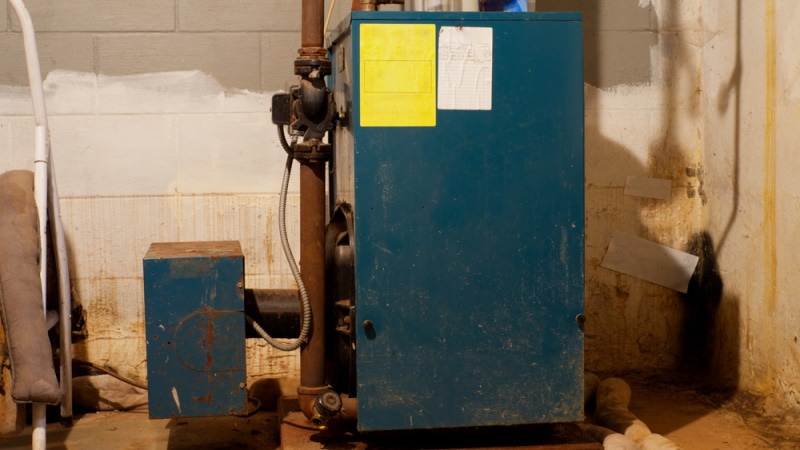
| Initial Expense | Moderate |
| Monthly Expense | Moderate to high |
| Maintenance Level | Moderate |
| Carbon Footprint | Moderate to high |
Oil furnaces, like natural gas furnaces, are easy to install and found in many US homes. However, they are less popular because you need to have the heating oil delivered to your home. That increases their carbon footprint significantly as well as their cost. It can also be a safety risk because your home’s indoor temperature will plummet if you run out of oil when it is frigid.
While their efficiency is similar to gas, oil furnaces are more expensive to run because oil is more costly than natural gas. Maintenance costs on oil furnaces are also higher because of the residue left after burning the oil. Lastly, like gas furnaces, the safety hazard created by an oil furnace is high due to the carbon monoxide produced by burning oil.
- Less expensive to install than a heat pump
- A service must deliver oil to your home.
- Less overall efficiency than heat pumps
- Gas presents a small risk of fire or explosion
- Oil might run out during cold weather
6. Condensing Boiler
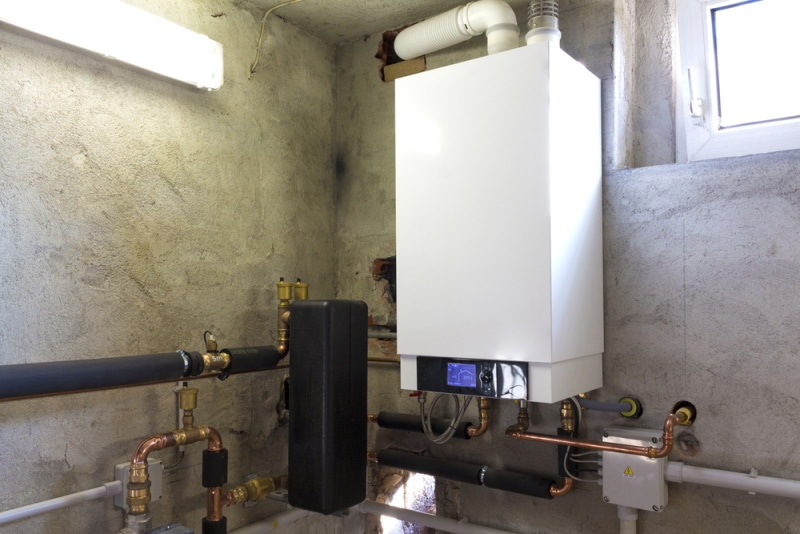
| Initial Expense | Moderate to high |
| Monthly Expense | Moderate |
| Maintenance Level | Low to moderate |
| Carbon Footprint | Moderate |
A condensing boiler heating system is similar to a traditional boiler system (see below), with the added benefit of a heat exchanger. That means they heat your home via hot water pumped through pipes and radiators and trap and use the heat produced by the boiler system itself.
That increases their efficiency by another 5 to 10%, further reducing energy costs. A new condensing boiler system can have an efficiency rating of nearly 95%, which is remarkable. The drawback, however, is that either natural gas or electricity is still needed to heat the water they use. If your home loses electricity during a winter storm, you might be in big trouble.
Also, natural gas is a safety hazard, and you need gas lines to use it, which might not be available in remote areas.
- New systems are highly efficient.
- Heat exchangers increase efficiency even further.
- Create a deep, radiating heat
- If electric, the heat could go out during a winter storm
- Safety hazard if powered by natural gas
7. Traditional Boiler
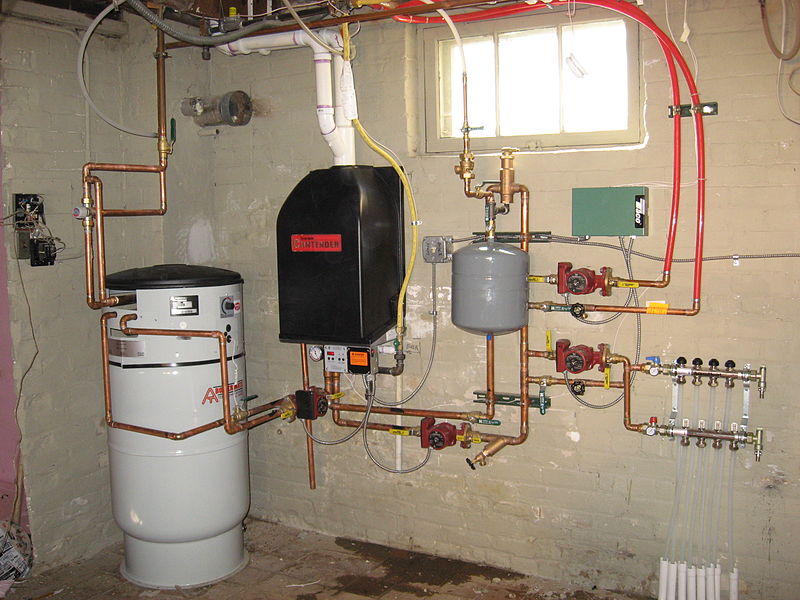
| Initial Expense | Moderate to high |
| Monthly Expense | Moderate |
| Maintenance Level | Low to moderate |
| Carbon Footprint | Moderate to high |
Traditional boilers are less energy-efficient in heating a home than condensing boilers, although they can still do a good job. Conventional boiler systems, like condensing boilers, use gas or electricity to heat water, which is pumped through pipes or radiators around your home.
Older boiler systems are notoriously bad at efficiently using energy, but modern boiler systems have increased their efficiency significantly. Today there are boiler heating systems with energy efficiency levels of 90%, which is impressive.
One drawback with boiler systems is that if there’s furniture in the way, it can block or absorb the heat. Also, if they’re powered by electricity and the electricity is knocked out by a storm, your home will get cold very quickly.
- Provide deep, radiating heat
- New boiler systems are much more energy efficient
- Older boiler systems deliver poor energy efficiency
- If electric, heat could go out during a storm
How To Boost the Energy Efficiency of Any Home Heating System
Replacing your home heating system might not be possible or practical and could cost an arm and a leg. For these reasons, it’s sometimes best to boost the efficiency of your existing heating system when possible. Below we have a few suggestions to do just that.
Seal and Insulate Ductwork
The duct system in your home can be a significant source of heat loss if it’s not sealed correctly and insulated. If your heating system is older, the chance of leaks in several places is relatively high. Also, many older duct systems weren’t insulated, allowing heat to escape and decreasing efficiency.
To boost the efficiency of any home heating system with ductwork, you should check for leaks and seal them with a metal-backed tape. Also, having the ducts insulated can greatly increase the system’s efficiency if they aren’t insulated.
Seal and Insulate your Home
As much as ductwork can be a source of heat loss and efficiency decrease, so can heat leaks around your home. Before winter sets in, you should check every door and window to ensure there aren’t large gaps around them.
Also, check where any wiring enters your home, as well as pipes, since leaks, although small, can be excessive. In short, anywhere there is a leak, crack, or gap that lets heat escape should be sealed, plugged, caulked, or otherwise insulated.
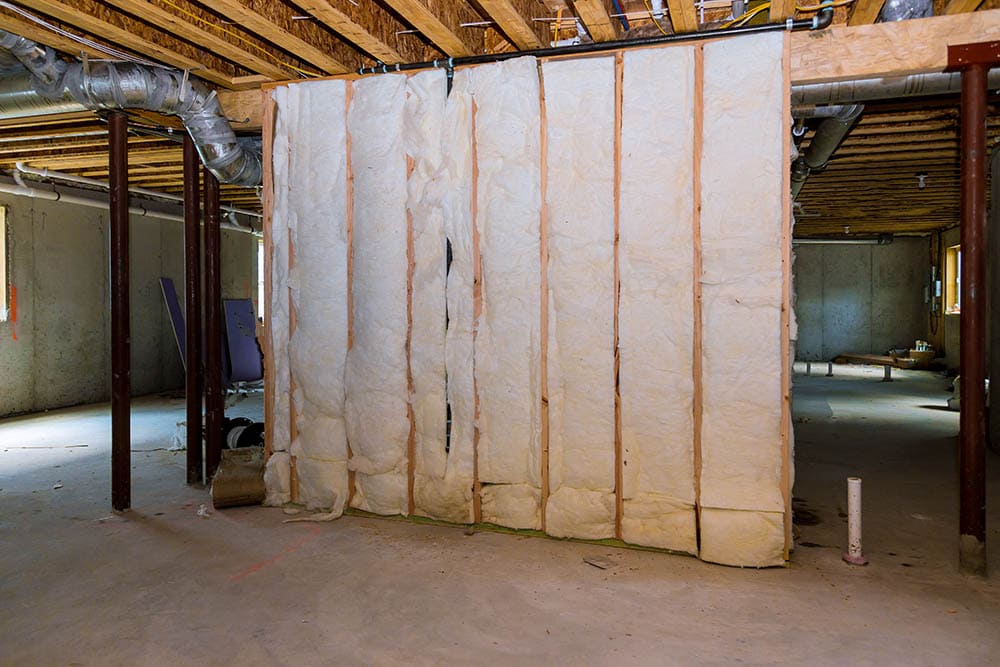
Purchase a Programmable Thermostat
Today there are thermostats you can purchase that allow you to program your home’s heating system so that it’s on when needed and off when not required. These new thermostats can, for example, be programmed to turn down during the day, back up at night, then back down again when everyone is sleeping.
The beauty is that you can set them and forget them, and they will work in the background to increase the overall efficiency of your home’s heating system. There are also so-called “smart thermostats” that learn your family’s habits and heat your home based on those habits. No matter which thermostat you choose, a new programmable thermostat can increase your home heating system’s efficiency by 5 to 10%.
Conclusion
As we’ve seen, a geothermal heat pump is the most energy-efficient way to heat a home. The one drawback is that the initial purchase and installation costs are significantly higher than the other systems. Still, these highly efficient systems usually pay for themselves in just a few years and are the only heating systems that can go over 100% efficiency. That means they produce more energy than they use.
We hope you found today’s information helpful and that all your questions about which home heating system is the most energy-efficient have been answered. Whichever design you choose to use, we wish you a toasty warm winter this season!
Featured Image Credit: Skylines, Shutterstock
Contents


